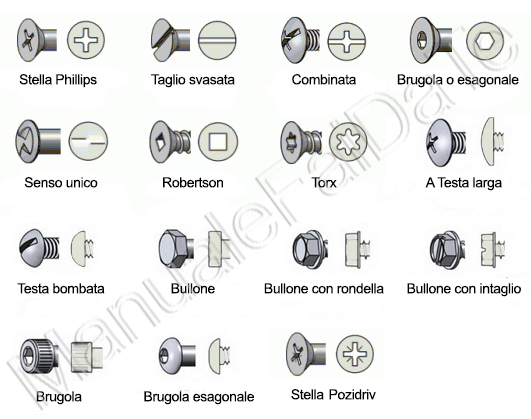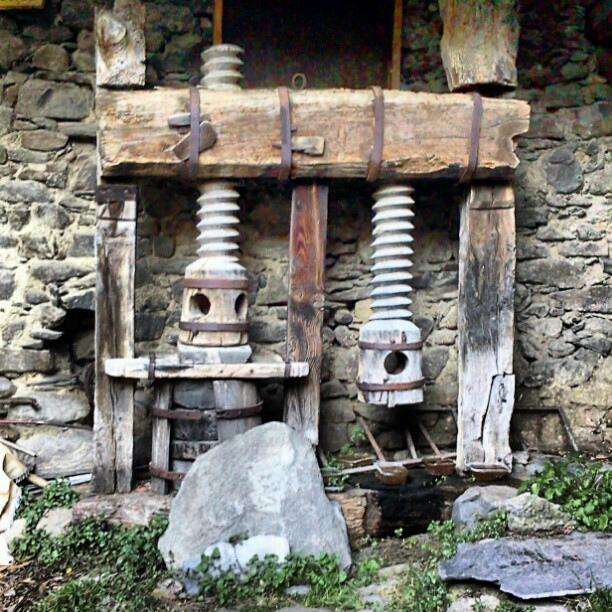
Screws, construction materials
The screws are commonly made of iron and steel and subjected to protective treatments (chrome plating, burnishing, tropicalization, ...) but special screws in stainless steel are also available on the market strong that do not rust in humid environments, aluminum lighter, titanium light and resistant.
Curiosities
The cross-headed screw was invented by the American J. P. Thompson, who sold the patent to Henry Phillips, founder of the Phillips Screw Company. Phillips had considerable difficulty finding a workshop capable of carving the new type of head, until he contacted the young American Screw Company who believed and invested in the idea, obtaining considerable success.

The most common screw grafts are slotted and star-shaped.
- Cut : it is an increasingly less used footprint because it tends to slip easily.
- Phillips cross : has a cross incision that facilitates the centering of the screwdriver and makes it more difficult to slide.
- Pozidriv cross : it is similar to the Phillips cross but does not allow the tool to come out; has four minor grooves between the main grooves, a Phillips screwdriver can operate on a Pozidriv screw but not vice versa.
- Torx : the head has a hole with a star section with six rounded tips; was used in early Apple computers as tamper-proof.
- Allen key or hexagonal: the head has a hexagonal hole and the tool can be an Allen screwdriver or a hexagonal section bar bent at L or T .
- Robertson : similar to the Allen but with a square section, it is mainly used in Canada.
- Tri-Wing : notch with three star engravings, to prevent disassembly.
- Torq-Set : similar to the cross one but with the four slightly offset carvings.
- Spanner : uses two holes to avoid tampering and vandalism. It is used in areas exposed to the public such as elevators and intercoms.
- Double hex
- One-way screw
- Polydrive or RIBE CV
- Triple square or XZN
- Bristol
Coupling dimensions, all possible screwdrivers
- Plates : 3mm, 4mm, 4.5mm, 5mm, 5.5mm, 6mm, 6.5mm, 7mm, 8mm.
- TORX : TX08, TX10, TX15, TX20, TX25, TX27, TX30, TX40, TX45
- Pozidriv cross : PZ0, PZ1, PZ2, PZ3
- Phillips cross : PH0, PH1, PH2, PH3
- TORX with protection : TX08, TX10, TX15, TX20, TX25, TX27, TX30, TX35, TX40
- Allen key : 1.5mm, 2.5mm, 2mm, 3mm, 4mm, 5mm, 6mm, 8mm, 1/16 ", 1/8", 3/16 ", 3/32 ", 5/32", 5/64 ", 7/32", 7/64 ", 9/64"
History, who invented the vine?
The invention of the vine is commonly attributed to the Greek mathematician Archita . In the 1st century BC . wood vines were used to make wine and oil presses in the Mediterranean basin.

Metal screws first appeared in Europe in the 15th century , but their use did not become common until the industrial production of these components.
British engineer Henry Maudslay patented a lathe for the manufacture of screws in 1797 . A similar device was patented the following year in the United States by David Wilkinson.
During the Second World War a standard was created to allow the exchange of components between allied nations.